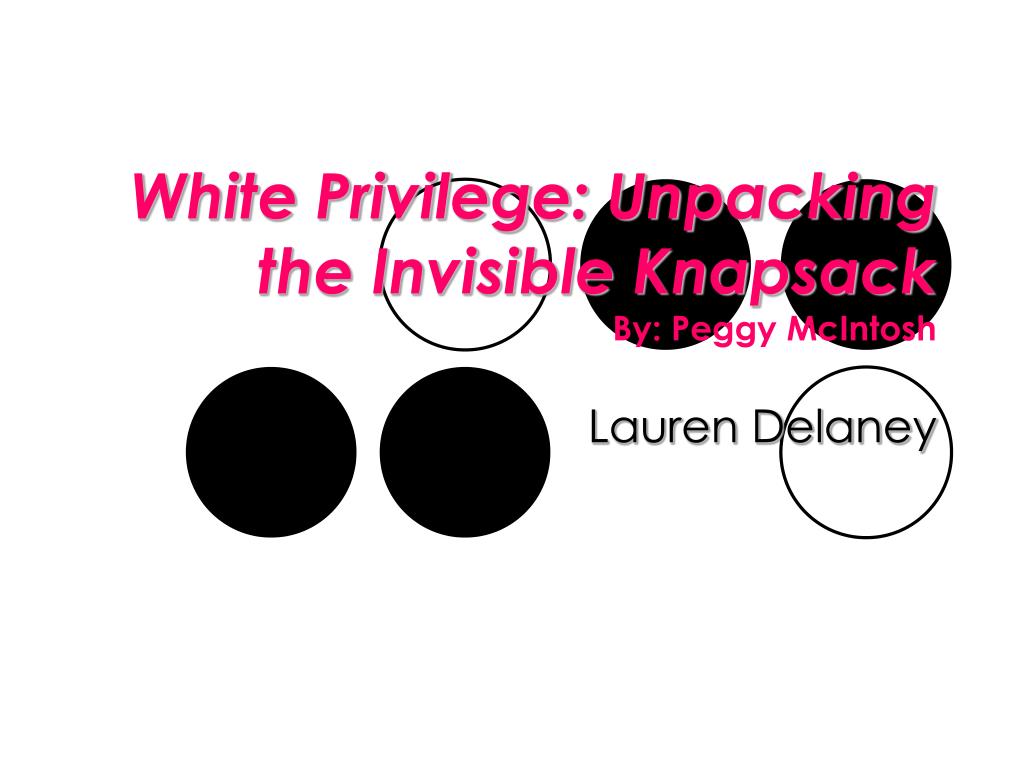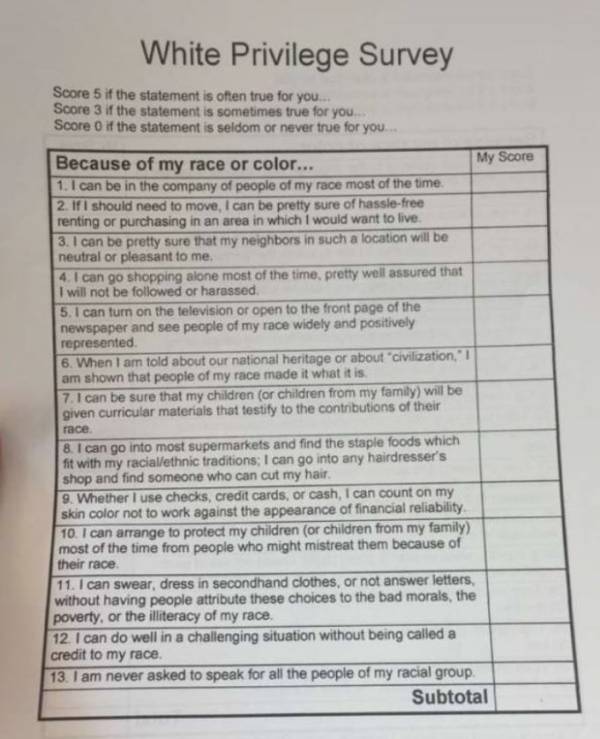

I Have the Privilege of Having a Positive Relationship with the Police, Generally While I have indeed learned important lessons from prominent White anti-racist educators (like the above ability-privilege analogy that I pulled from Tim Wise), here are lessons people of color have taught me that have changed my life-and they could change yours as well. Yet, when it comes to White Privilege, White people somehow become the authority.



In fact, navigating a tour of the state capital with a student in a wheelchair for 30 minutes taught me more about life in a wheelchair than my previous 30+ years had taught me.
#White privilege unpacking the invisible knapsack full
But how odd is it that White people are the ones who so often disproportionately get the credit for educating about White privilege? Think of it this way: Because I have always had full use of my legs, I’d be the last person you’d turn to to learn about life in a wheelchair. For example: “I am never asked to speak for all the people of my racial group” or “If my day, week, or year is going badly, I need not ask of each negative episode or situation whether it has racial overtones.” Taken together, McIntosh’s list reveals a privilege she never explicitly states: the privilege to feel normal. Her list of privileges makes the concept readable and digestible-heck, the success of Everyday Feminism is largely because of this listing format. Perhaps most indicative of the power and prevalence of White Privilege is that, though people of color have been fighting racism since its invention, those who are most associated with White Privilege education tend to be White people: Tim Wise, Robin DiAngelo, Paul Gorski, and, of course, Peggy McIntosh, author of the 1989 article, “White Privilege: Unpacking the Invisible Knapsack.” And I understand why Peggy McIntosh’s “Knapsack” article continues to fill anti-racist syllabuses 26 years later. Or, as Ta-Nehisi Coates writes, I “believe White.” I’ve yet to get a DNA test, which led to a surprising result for a White supremacist who thought himself 100% White. It doesn’t mean that I, as a White person, don’t work hard (I do) or that I haven’t suffered (well, I have known struggle), but simply that I receive help, often unacknowledged assistance, because I am White. What is White Privilege? The reality that a White person’s whiteness has come-and continues to come-with an array of benefits and advantages not shared by many people of color. Throw “White Privilege” into the discussion, and the awkwardness-and defensiveness-can multiply astronomically. If you checked out the Jose Antonio Vargas documentary about White people, aptly titled White People, you’ll know that many White people struggle to discuss race (not that some of you needed a documentary to confirm this fact). This article was originally published by Everyday Feminism.


 0 kommentar(er)
0 kommentar(er)
